IPTV vs OTT: Decoding the World of Internet Streaming
You’ve probably heard the terms IPTV and OTT thrown around, especially when talking about cutting the cord or finding new ways to watch TV. But what do they actually mean? Are they the same thing? Not quite. Understanding the difference between Internet Protocol Television (IPTV) and Over-The-Top (OTT) services is key to choosing the right streaming setup for your home. Both deliver video content over the internet, bypassing traditional cable or satellite methods, but they do so in fundamentally different ways, impacting everything from picture quality to channel selection and cost.
So, what’s the fundamental distinction? Think of it like roads. IPTV often uses a private, managed network – like a dedicated highway built by your service provider specifically for delivering TV content smoothly. OTT, on the other hand, travels over the public internet – the same busy highway everyone else uses for emails, browsing, and video calls. This difference in delivery mechanism is the core of IPTV vs OTT discussions. IPTV is typically offered by telecom companies or specific IPTV service providers who control the network infrastructure right to your home, allowing them to guarantee bandwidth and quality. OTT services, like Netflix, Hulu, Disney+, or even services offering live channels like Sling TV or YouTube TV, simply need an internet connection; they don’t manage the network itself.
Why does this matter to you, the viewer? It affects reliability, potential costs, and the type of content you can access. IPTV can often provide a more stable, high-quality stream, especially for live TV, because the bandwidth is reserved. OTT’s quality can fluctuate depending on your internet speed and general internet traffic. However, OTT offers immense flexibility – you can sign up for services individually, often without long-term contracts, and access them on almost any internet-connected device. IPTV might be bundled with internet services or require specific hardware like a set-top box. We’ll dive deeper into these aspects, exploring how each technology works, their pros and cons, and which might be the best cheap IPTV service or OTT option for your viewing habits.

Consider this: are you primarily looking for a replacement for traditional live TV channels with guaranteed quality, or are you more interested in vast libraries of on-demand movies and shows, plus maybe some live options, with flexibility being paramount? Your answer will start guiding you towards either IPTV or OTT, or perhaps even a combination of both. Many households today use both types of services to get the breadth of content they desire. Let’s break down the mechanics and features of each to make the choice clearer.
How Does IPTV Work? The Mechanics Behind Internet Protocol Television
Let’s get into the nuts and bolts of IPTV. How does it actually deliver television content to your screen using the internet? Unlike traditional broadcast methods (terrestrial, satellite, cable) that send out signals broadly, hoping receivers pick them up, IPTV uses a more direct, controlled approach through Internet Protocol (IP). Essentially, it’s television delivered over a managed, private network.
Think about your internet service provider (ISP). Often, the same companies that provide your internet access also offer IPTV services. Why is this common? Because they control the network infrastructure – the physical lines (fiber optic, DSL) running to your home. This control allows them to allocate a specific portion of the bandwidth on that network exclusively for their IPTV service. This is crucial. It means the data packets carrying your TV show aren’t competing as fiercely with your neighbour’s video conferencing or your online gaming. This dedicated bandwidth is what enables IPTV providers to offer a Quality of Service (QoS) guarantee, promising a stable stream with minimal buffering and high resolution, much like traditional cable TV, but with the added benefits of IP technology.
What are those benefits? IPTV isn’t just about replicating cable TV over IP. It allows for more interactivity. Features like Video on Demand (VOD), network-based Personal Video Recording (nPVR), and interactive program guides are inherent capabilities. The system works like this: Content (live channels, movies) is stored on servers managed by the provider. When you select a channel or movie, a request is sent via the IP network. The server then encodes the video into IP packets and streams them directly to your device – usually a specific set-top box (STB) provided by the company, though some services support apps on smart TVs or devices like the Firestick using IPTV Smarters. Because it’s a closed, managed network, the provider ensures the packets arrive in order and on time, resulting in a smooth viewing experience. This controlled delivery is a major selling point for many users seeking reliable, high-quality live TV streaming, differentiating it significantly from the ‘best effort’ delivery common with OTT over the public internet.
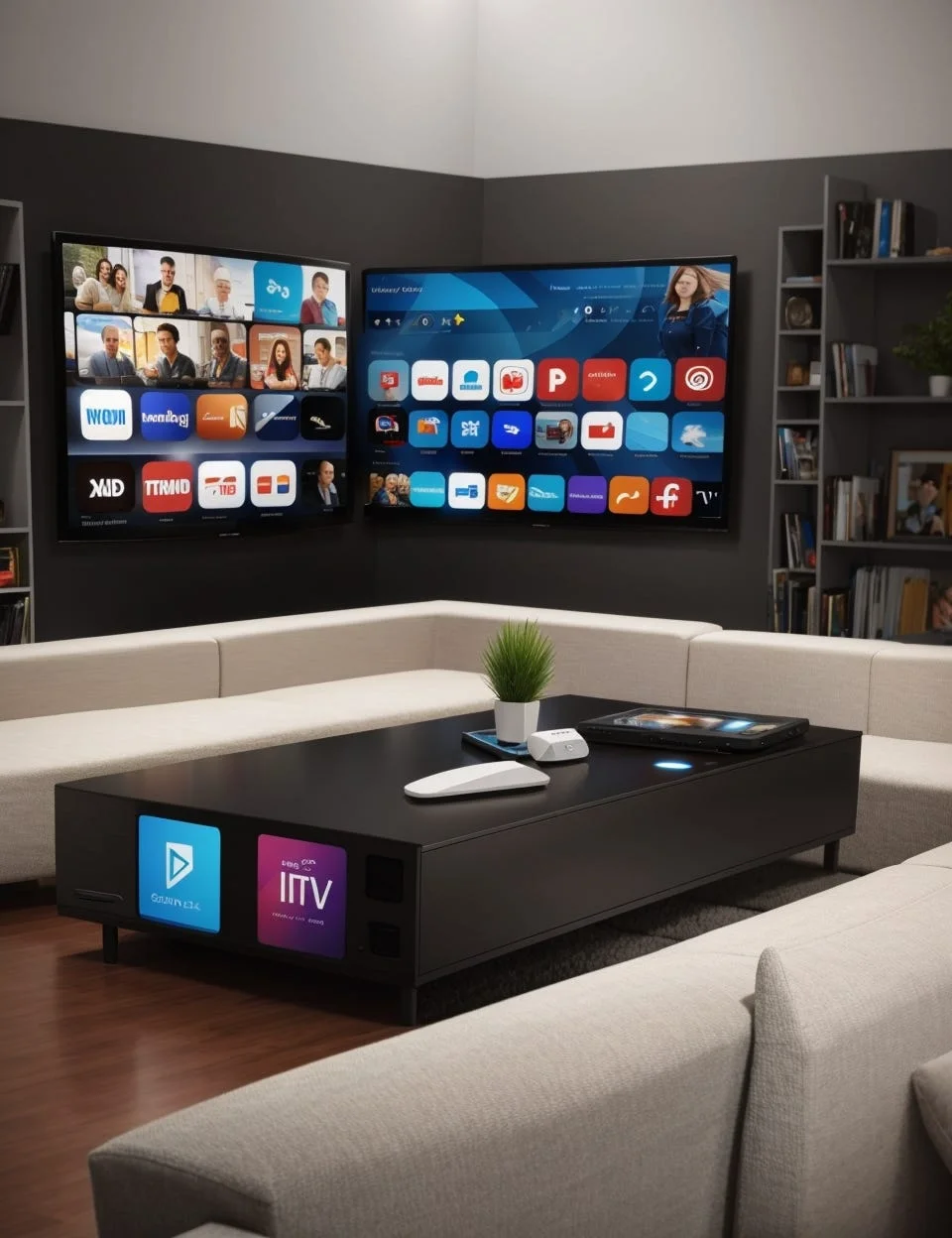
Is IPTV always tied to your ISP, though? Not necessarily. While telco-provided IPTV is common, there are also independent cheap IPTV providers who operate their own systems. However, the core principle remains: they manage the delivery network to ensure quality, often requiring specific apps or configurations. You might need to follow a setup guide IPTV to get started. The key takeaway is the ‘managed network’ aspect. This infrastructure investment allows IPTV to excel in delivering consistent, high-definition live television streams, making it a strong contender for those prioritizing a traditional TV experience delivered via modern technology.
Understanding OTT: Streaming Over the Open Internet
Now, let’s shift gears to Over-The-Top (OTT) services. What does “Over-The-Top” actually mean in this context? It signifies that the video content is delivered “over the top” of the existing internet infrastructure, without the service provider being involved in managing or controlling that infrastructure (beyond providing the basic internet connection). Think of Netflix, Amazon Prime Video, Disney+, Hulu, Max, Apple TV+, and even live TV streaming services like YouTube TV, Sling TV, and FuboTV. You subscribe directly to these services, and they deliver content through whichever internet connection you happen to have – be it from Comcast, AT&T, a local fiber provider, or even mobile data.
How does this differ technically from IPTV’s managed network? OTT services use the public internet. When you stream a movie on Netflix, the video data travels alongside all other internet traffic – emails, websites, gaming data, everything. These services employ technologies like Adaptive Bitrate Streaming (ABS). Have you ever noticed the video quality dip for a second or two when your internet connection fluctuates, then recover? That’s ABS at work. It detects your available bandwidth and adjusts the video quality in real-time to minimize buffering and keep the stream playing, even if it means temporarily lowering the resolution. While this enhances playback resilience on variable networks, it also means OTT providers typically cannot offer the same strict Quality of Service (QoS) guarantees as IPTV providers who control the ‘last mile’ connection.
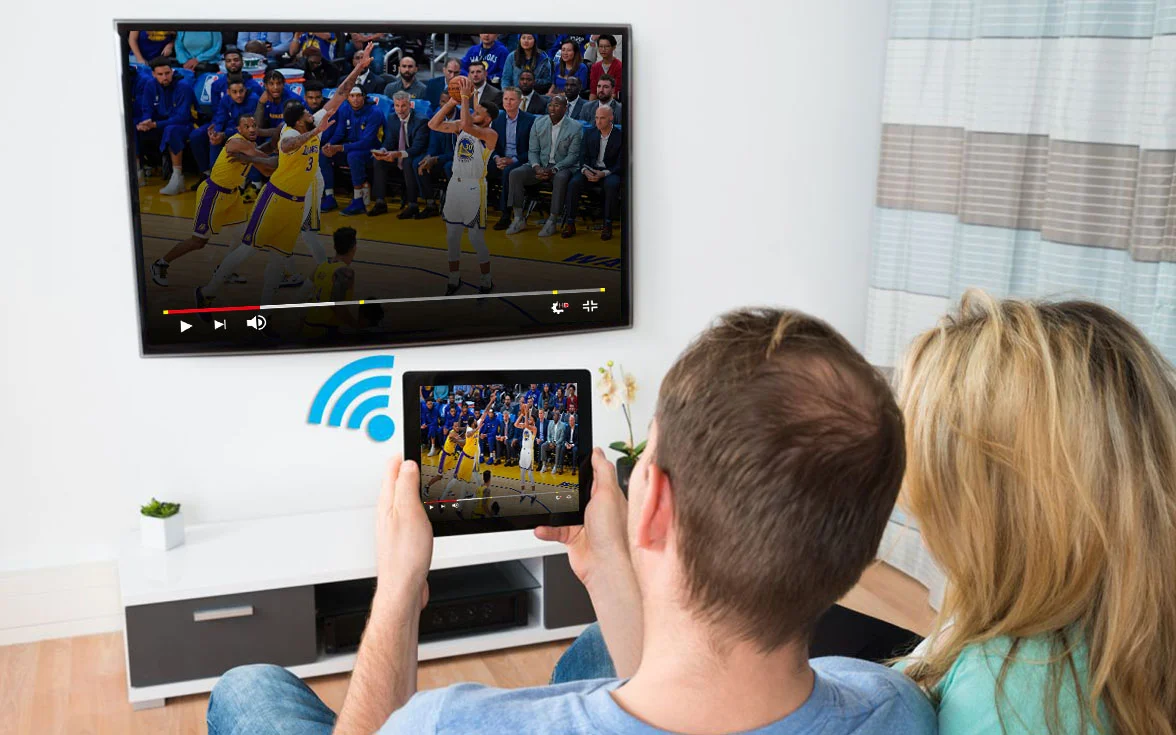
What are the advantages of this approach? Flexibility and accessibility are huge. You aren’t tied to a specific internet provider to access OTT content. As long as you have a decent internet connection, you can sign up and watch from virtually anywhere, on a vast array of devices: smart TVs, smartphones, tablets, computers, gaming consoles, and streaming devices like Roku, Apple TV, and Amazon Fire TV Stick. Setting up is usually as simple as downloading an app and logging in. The content libraries are often enormous, particularly for on-demand movies and original series, which is a major draw for services like Netflix and Max. Many OTT services also offer subscription plans with different tiers, often without long-term contracts, allowing users to easily subscribe or cancel.
Are there downsides? The reliance on the public internet means performance can be less consistent than IPTV. During peak internet usage times in your neighbourhood, or if your own home network is congested, you might experience buffering or reduced quality, even with a high-speed plan. While live TV is available through some OTT services (vMVPDs – virtual Multichannel Video Programming Distributors), it can sometimes suffer more latency or quality dips compared to IPTV’s dedicated delivery, though technology is constantly improving. The cost can also add up if you subscribe to multiple OTT services to get the variety of content you want, potentially exceeding the cost of a single comprehensive IPTV package or traditional cable bundle. Ultimately, OTT’s strength lies in its unparalleled flexibility, device compatibility, and often vast on-demand libraries, delivered conveniently over your existing internet connection.
Key Differences: Delivery, Content, and Quality
Okay, we’ve looked at how IPTV and OTT work individually. Now, let’s put them side-by-side. What are the crucial distinctions you need to grasp when comparing IPTV vs OTT? The differences primarily boil down to three key areas: the delivery network, the typical content focus, and the resulting quality and reliability.
Delivery Network: This is the most fundamental difference. IPTV typically uses a private, managed IP network, often provided and controlled by your internet service provider or a dedicated IPTV company. They reserve bandwidth specifically for the TV service, ensuring data packets for your show get priority. Think of it as a dedicated, high-speed lane on the highway just for TV traffic. OTT, conversely, uses the public internet – the same general highway everyone uses for everything. OTT providers don’t control the network path; they simply send the video data over your existing connection, hoping for the best. This “best effort” delivery relies on technologies like adaptive bitrate streaming to cope with network congestion.
Content Focus: While the lines can blur, there’s often a difference in primary content focus. IPTV services traditionally aimed to replicate or replace traditional cable/satellite TV. Therefore, their strength often lies in offering a wide range of live TV channels, including local broadcasts, premium channels, and international options, often organized in familiar packages. Many also offer Video on Demand (VOD) libraries, but the live TV experience is frequently central. OTT services, particularly Subscription Video on Demand (SVOD) like Netflix or Disney+, focus heavily on vast libraries of on-demand movies, TV series, and original productions. While some OTT services (vMVPDs like YouTube TV, Sling TV) specialize in live TV channel bundles, the broader OTT category is arguably more known for its on-demand content. You might find channels for cheap through various IPTV providers, focusing on that live experience.
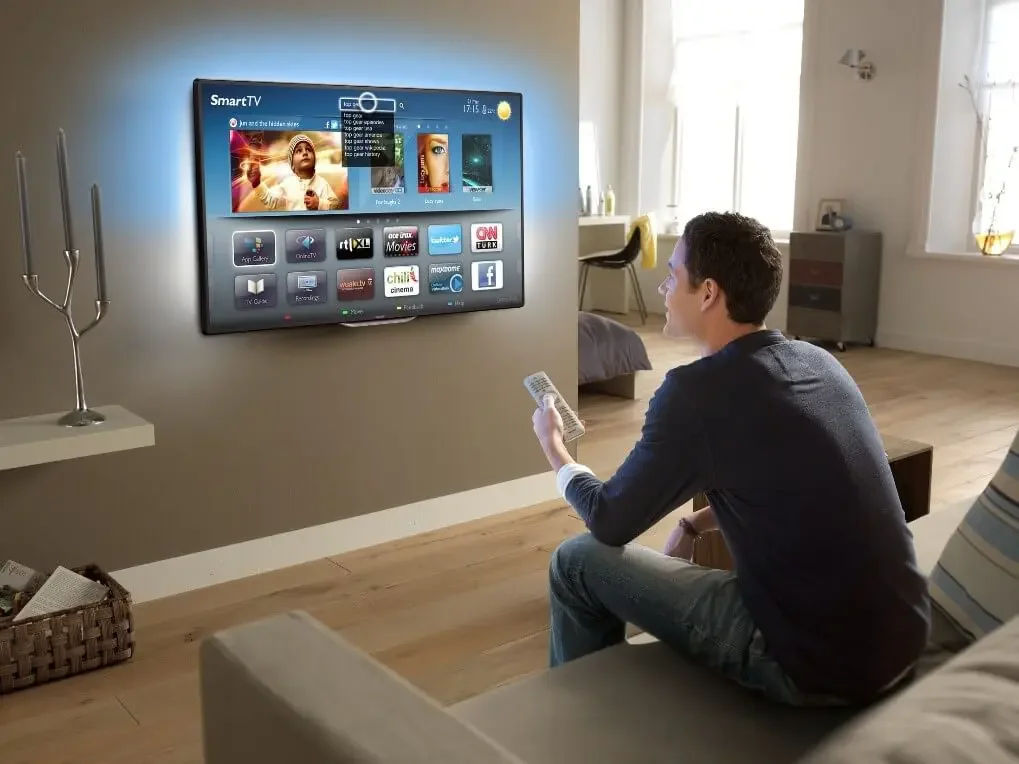
Quality and Reliability: Which one offers better quality? Due to the managed network and dedicated bandwidth, IPTV can generally offer a more consistent, high-quality viewing experience, especially for live TV. Buffering is less likely, and providers can often guarantee HD or even 4K quality where available, as they control the data flow right to your home device (often a specific set-top box). OTT quality, because it travels over the public internet, is more variable. It depends heavily on the quality and current load of your internet connection, your home Wi-Fi setup, and general internet congestion. While OTT services use clever tech to minimize disruptions and can deliver excellent quality under good conditions, they are inherently more susceptible to fluctuations than a managed IPTV network. Think about it – is consistent live sports streaming without glitches your top priority? IPTV might have an edge. Do you primarily watch on-demand shows and are okay with occasional quality adjustments? OTT is often perfectly suitable and offers great flexibility. Exploring IPTV deals might reveal options that guarantee quality for a predictable price.
Content Libraries: What Can You Watch on IPTV vs. OTT?
When choosing between IPTV and OTT, one of the biggest questions is: what can I actually watch? Does one offer more channels? Does the other have better movies? The content available varies significantly, not just between IPTV and OTT as categories, but also between individual providers within each category.
IPTV services often position themselves as direct replacements for traditional cable or satellite TV. Consequently, their content libraries typically emphasize a broad selection of live television channels. This can include:
- Local broadcast channels (ABC, CBS, NBC, FOX, PBS)
- Popular cable networks (ESPN, CNN, HGTV, AMC, Discovery)
- Premium channels (HBO, Showtime, Starz – often as add-ons)
- International channels catering to specific regions or languages
- Specialty channels (sports packages, movie channels)
Many IPTV providers structure their offerings into tiered IPTV plans, similar to cable packages, where higher tiers unlock more channels. Alongside live TV, most IPTV services also provide a Video on Demand (VOD) library. This might include movies, catch-up TV (recently aired shows), and sometimes entire series. However, the VOD library’s size and freshness can vary greatly depending on the provider; it might not be as extensive or up-to-date as dedicated OTT VOD services. The focus remains heavily on delivering a comprehensive live channel lineup, potentially including niche options not easily found elsewhere. You might even find providers specializing in specific regions, like IPTV USA focused services.
OTT content, on the other hand, is incredibly diverse, largely because “OTT” is a broader category encompassing different models.
- SVOD (Subscription VOD): Services like Netflix, Hulu, Amazon Prime Video, Disney+, Max, Apple TV+. Their main draw is vast libraries of on-demand movies, television series (both licensed and original), documentaries, and specials. Original content is a huge differentiator here.
- AVOD (Advertising-based VOD): Services like Tubi, Pluto TV, Roku Channel. They offer free access to movies and shows, supported by advertisements.
- TVOD (Transactional VOD): Services like Apple iTunes Store, Google Play Movies & TV, Vudu. You rent or buy specific movies or TV show episodes/seasons.
- vMVPDs (Virtual Multichannel Video Programming Distributors): Services like YouTube TV, Hulu + Live TV, Sling TV, FuboTV. These OTT services specifically aim to replicate the cable TV experience by offering bundles of live channels streamed over the internet. Their channel lineups vary but often include local channels, popular cable networks, and sports channels.
So, can you get live TV on OTT? Yes, through vMVPDs. Can you get on-demand on IPTV? Yes, typically. But the emphasis differs. If your priority is accessing thousands of movies and binge-worthy original series on demand, SVOD giants within the OTT world excel. If you want a robust package of hundreds of live channels, including potentially niche or international ones, IPTV might be a better fit, though vMVPDs are strong competitors here too. Many users find a combination works best: perhaps a basic IPTV or vMVPD package for essential live channels and news, supplemented by one or two SVOD subscriptions for on-demand entertainment. Checking specific IPTV channel subscription lists is vital before committing.
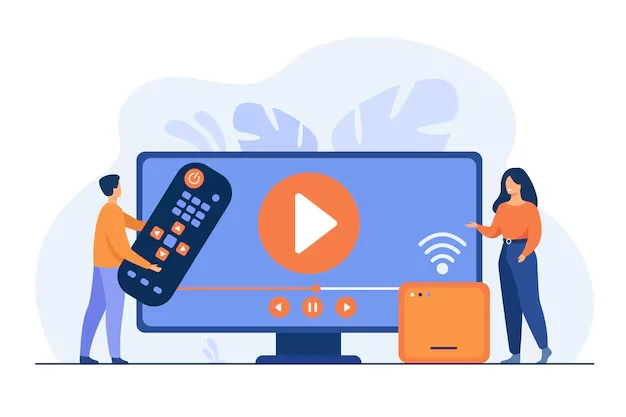
Cost Considerations: Which is More Affordable, IPTV or OTT?
Ah, the bottom line: how much is this going to cost? Comparing the price of IPTV vs OTT isn’t always straightforward, as pricing models and what’s included can differ significantly. Is one inherently cheaper than the other? Not necessarily, it depends heavily on your viewing habits and the specific services you choose.
IPTV pricing often resembles traditional cable or satellite models. You’ll typically find tiered packages, where basic tiers offer a limited number of channels and higher-priced tiers add more channels, premium networks, and potentially features like more simultaneous streams or cloud DVR storage. Costs can range from very cheap IPTV options, perhaps $10-$20 per month for basic or specialized packages from independent providers, up to $100+ per month for comprehensive packages from major telecom companies that bundle hundreds of channels, similar to premium cable. Sometimes, IPTV is bundled with internet and/or phone services, which can offer savings but also lock you into a contract. Potential additional costs might include equipment rental fees (for the set-top box), installation fees, and potentially regional sports network fees or broadcast TV surcharges. It’s important to look at the total IPTV price, not just the advertised rate.
OTT pricing is generally more fragmented and flexible.
- SVOD services (Netflix, Hulu, etc.): Usually charge a flat monthly fee, often with multiple tiers based on stream quality (SD, HD, 4K), number of simultaneous screens, and sometimes ad tolerance (ad-supported vs. ad-free). Prices typically range from around $5 (for ad-supported or basic plans) to $20+ per month per service.
- vMVPDs (YouTube TV, Sling TV, etc.): These live TV streaming services have monthly fees that vary based on the channel package. Basic packages might start around $25-$40 (like Sling TV’s smaller bundles), while more comprehensive packages rivaling cable/IPTV can cost $70-$100+ per month. Add-on packages for sports, premium channels, or extra features are common.
- AVOD services (Tubi, Pluto TV): These are free, supported by ads.
- TVOD services (Vudu, Apple): You pay per rental or purchase, so costs vary based on consumption.
The potential issue with OTT is “subscription fatigue” and cost creep. While individual services might seem inexpensive, subscribing to several (e.g., Netflix + Max + Disney+ + a vMVPD for live TV) can quickly add up, potentially exceeding the cost of a single IPTV package. However, the lack of contracts for most OTT services provides flexibility – you can subscribe to watch a specific show and then cancel, or rotate subscriptions. Many people seek out affordable IPTV services precisely because they offer a large bundle of channels for a single, often lower, monthly fee compared to combining multiple OTT subscriptions. Comparing the IPTV subscription cost directly against a comparable bundle of OTT services is key.

So, which is cheaper? If you only need one or two specific OTT services (like just Netflix), OTT is likely cheaper. If you want a wide range of live channels similar to cable, comparing a comprehensive IPTV package against a comparable vMVPD package (plus any SVOD services you want) is necessary. Sometimes, cheapest IPTV subscription deals can offer significant savings for heavy live TV viewers, especially if they include international or sports channels that are expensive as OTT add-ons.
Device Compatibility and Setup: Accessing Your Content
How easy is it to actually start watching once you’ve chosen a service? The setup process and the devices you can use often differ between IPTV and OTT, which can be a deciding factor for some users.
IPTV setup can sometimes be more involved, particularly if it’s from a major telecom provider. It often requires a dedicated set-top box (STB) provided by the company, similar to traditional cable. This box connects to your TV (usually via HDMI) and to your internet modem/router (often via Ethernet for the most stable connection, though Wi-Fi might be an option). An installation appointment might even be necessary. Why the specific box? It’s often pre-configured to work securely on the provider’s managed network and might run proprietary software for the program guide and features. However, the landscape is evolving. Many independent IPTV providers, especially those offering low-cost IPTV, don’t rely on proprietary boxes. Instead, they provide access details (like a username/password or an M3U playlist URL) that you can use with third-party IPTV player apps. Popular apps like IPTV Smarters Pro or TiviMate can be installed on various devices, including:
- Amazon Fire TV Stick / Fire Cube
- Android TV boxes / Smart TVs with Android TV
- Smartphones and tablets (Android and iOS)
- Sometimes PCs via specific software or web players
Using these apps often requires following a specific setup guide, like entering server details or loading a playlist file. While this offers more device flexibility than a locked-down STB, it might require a bit more technical comfort from the user. Resources like guides on installing IPTV Smarters Pro on Firestick are widely available.
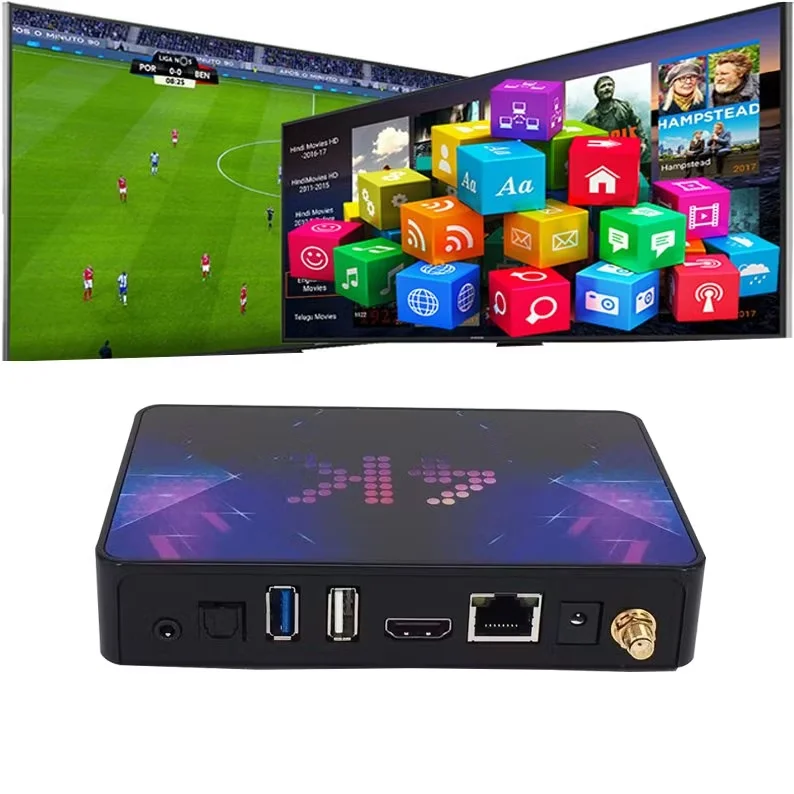
OTT setup, in contrast, is generally known for its simplicity and wide device compatibility. Most OTT services (Netflix, Hulu, YouTube TV, etc.) have dedicated apps available on virtually every popular platform. Setup usually involves:
- Downloading the official app from the device’s app store (e.g., Google Play Store, Apple App Store, Roku Channel Store, Amazon Appstore).
- Launching the app and logging in with your subscription credentials.
That’s typically it. Because OTT runs over the standard internet, there’s no need for special network configurations or provider-specific hardware in most cases. You can watch on:
- Smart TVs (Samsung, LG, Sony, Vizio, etc.)
- Streaming devices (Roku, Apple TV, Amazon Fire TV, Chromecast with Google TV)
- Game consoles (PlayStation, Xbox)
- Computers (via web browsers or dedicated apps)
- Smartphones and tablets (iOS and Android)
This ease of access and broad compatibility is a major advantage for OTT. If you already own several of these devices, getting started with an OTT service is incredibly straightforward. Which system is better? If you prefer a simple, integrated experience often provided by a dedicated box and value the potential quality guarantees of a managed network, traditional IPTV might appeal. If you value flexibility, want to use devices you already own, and are comfortable with app-based viewing, OTT or app-based IPTV solutions offer greater versatility. Consider looking into options like IPTV apps for Firestick if you prefer that device.
Choosing the Right Service for You: IPTV or OTT?
We’ve dissected the technology, content, costs, and setup for both IPTV and OTT. Now for the big question: which one should you choose? There’s no single “best” answer; the ideal choice depends entirely on your individual needs, priorities, and viewing habits.
Let’s recap the core strengths of each. IPTV often excels in:
- Reliability and Quality for Live TV: The managed network typically provides a more stable, consistent stream with less buffering, especially crucial for live sports or events.
- Comprehensive Channel Packages: Often designed to mirror traditional cable, potentially offering hundreds of channels, including local, international, and specialty options in one bundle.
- Integrated Experience: Services from major providers often come with a dedicated set-top box and a unified interface, which some users find simpler.
- Potential for Bundling: Can sometimes be bundled with internet for potential cost savings (though check for contracts).
You might lean towards IPTV if you are primarily looking for a high-quality replacement for traditional cable TV, watch a lot of live channels (especially sports or international content), value stream stability above all else, and perhaps prefer a single bill for a large bundle of channels. Exploring various IPTV subscription offers could reveal a package that fits this profile.
OTT, on the other hand, generally shines with:
- Flexibility and Choice: Subscribe only to the services you want (Netflix, Hulu, a vMVPD, etc.), often without contracts. Easily add or remove services.
- Vast On-Demand Libraries: Unmatched access to movies, series, and original content through SVOD services.
- Wide Device Compatibility: Watch on almost any smart device you already own (TVs, phones, tablets, streaming sticks) using simple apps.
- Accessibility: Works over any standard internet connection, no need for a specific provider’s network.
You might prefer OTT if you primarily watch on-demand content, value flexibility and the ability to customize your subscriptions, want to avoid contracts, watch on multiple different devices (including mobile), and have a reliable internet connection. Combining multiple OTT services can replicate a broad content offering, though managing multiple subscriptions and potentially higher combined costs are factors to consider. If you’re looking to buy IPTV channels specifically, comparing IPTV providers versus OTT live TV services (vMVPDs) is essential.
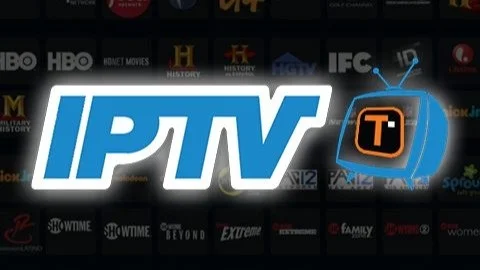
Can you use both? Absolutely. Many households find a hybrid approach works best. For instance, using a cheap IPTV service for a base package of essential live channels or specific international content, supplemented with subscriptions to one or two favorite OTT platforms like Netflix or Disney+ for their on-demand libraries and originals. This allows you to balance cost, content variety, and quality. Consider your budget, the types of content you watch most (live vs. on-demand), your tolerance for potential quality fluctuations (OTT) versus potentially less device flexibility (some IPTV), and how technically comfortable you are with setup. By weighing these factors against the characteristics of IPTV vs OTT, you can make an informed decision and buy an IPTV subscription or assemble an OTT package that perfectly suits your entertainment needs.